Just as we’ve preached about the importance of having different shoes for walking, the same principle applies to strength training. You really do need a separate pair for your gym workouts! Our team spent time testing and comparing the best gym shoes to help you find the perfect match.

Walk into any gym (or scroll through social media) and you’ll probably spot people lifting barefoot, in socks or wearing minimalist shoes. There’s a reason for that!
Being barefoot allows your feet to do what they’re meant to do: grip the floor and help you transfer power more efficiently, especially when picking up heavier weights.
That ground contact actually strengthens your feet, which not only improves performance in the gym but also pays off big time for your running by reducing injury risk.
Before we jump into our list of the best weight lifting shoes, let’s take a quick look at why running shoes aren’t the right choice for strength training.
Why You Can’t Wear Running Shoes to Lift
We get it, it’s tempting to just use the same pair of shoes for everything. But doing that can come with some risks! As our friend, Dr. Lisa DPT, always reminds us, you don’t want to waste valuable miles on your running shoes just by walking around or hitting the gym.
Think about it, running shoes, especially those designed with extra cushioning, are meant to absorb impact and keep you moving forward. They’re bouncy and soft, which is great for running but not ideal when you’re standing still or lifting weights.
That squishy base can actually throw you off your balance, making it easier to roll an ankle or strain something during heavy lifting or plyometric moves. And we definitely don’t want that!
Before your next strength session, here are a few reasons to rethink the shoes you wear in the gym.
1. Too Much Cushion
Running shoes are designed to keep the foot stable and cushioned while doing that specific activity, but that design can cause trouble while weightlifting.
- The squishy foam of the soft, compressible soles is designed to absorb shock, but it also makes it hard to remain stable while squatting, doing deadlifts, or performing maneuvers like overhead presses.
- The shoes can cause you to lose force transfer and wobble or shift under the load, making injury more likely.
2. Higher Heel Drop Changes Your Form
The raised heel-to-toe drop of running shoes also causes issues while lifting weights. If it’s a higher drop shoe, your heel will sit higher than your toes, shifting your weight forward. While this is technically helpful for squats, it’s not ideal for other exercises.
- The heel stack shifts your center of gravity forward, altering your posture and form, particularly during deadlifts.
- Your foot loses contact with the floor, resulting in reduced stability and less power transfer.
3. Too Much Flexibility Isn’t Good
Running shoes are designed to be flexible enough to allow for foot movement, but that’s not ideal for lifting. They also often have a rocker shape built into them to help propel you forward. When you’re lifting in the gym, you don’t need to move forward; you need direct ground contact.
Here’s why:
- Lifting, especially heavy weights, requires a stable, firm base so you can push against the ground effectively.
- A flexible base creates a risk of rolling your ankle or disturbing proper form as your body attempts to steady itself.
4. Lifespan of the Shoe Decreases
There’s a reason why we tell you to rotate your running shoes, and it’s pretty much the same reason you shouldn’t wear them in the gym – the lifespan.
Your wallet will thank you not having to go and buy a new pair of shoes every few months too!
Here’s why:
- It’s been said the average lifespan of a running shoe is roughly 500 miles. Wearing them in the gym and for cross-training is only going to get you to this number faster.
6 Best Gym Running Shoes
Now it’s time for the fun part: let’s break down the best weight-lifting shoes, based on feedback from our team of testers.
We may spend most of our time talking about running shoes here at RTTF, but we’re all putting in a lot of time strength training too, so need to do a better job of sharing those shoes as well!
If you’re looking to add a pair of dedicated gym/weightlifting shoes to your closet, here are our six favorites right now.
Versatile Low-drop Shoe- New Balance Minimus TR BOA® v2
This training shoe is perfect to help you through squats, deadlifts, power cleans, and even a HIIT workout or ten.
It’s not cushioned, but it gives you enough support that if you’re running intervals, you won’t feel like you’ve got nothing on your feet.
These New Balance weightlifting shoes are lightweight, not clunky, and come in black (which of course goes with everything). They don’t have regular laces, instead employing their innovative BOA Fit System.
If you don’t like it or feel daunted by a new-to-you system, they do come with optional regular laces. The Fit System is easy to learn, though, and every pair comes with a how-to on the tag.
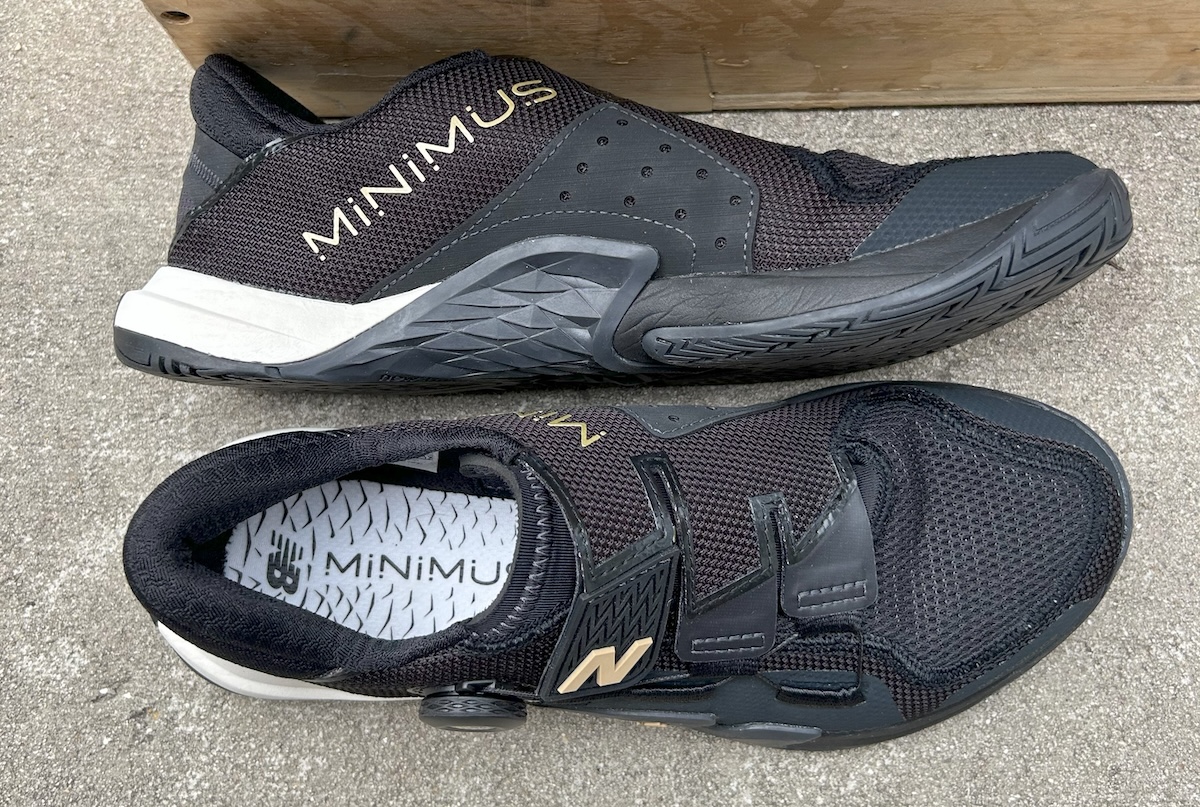
They create a secure fit that’s easy to adjust and hard to beat. The heel collar is lightly padded and flexible, and the tongue is thin and wraps around your foot.
The shoes feature a rubber wrap on the inner arch of the shoe to help with grip while rope climbing, so if that’s not something you need or want, it could feel a little uncomfortable at first.
If you’re not used to the minimal feel and low drop, they could take some getting used to, but these really are an ideal option as opposed to just going barefoot.
That said, your Achilles might scream about going from higher drop shoes to almost nothing, so you might benefit from a transition shoe.
- Heel toe drop: 4 mm
- Weight: 9.5 oz Men’s,7.5 oz Women’s
- Stack: 14 mm
- Available in 1 color
- Not available in wide
- Available on Newbalance.com for $149.99
- Check out our full review of the New Balance Minimus TR Boa v2 here
Best Hybrid Shoe For Classes- Lululemon Chargefeel 3
Lululemon says these shoes can go from the gym to the road, and they’re not wrong, even if you probably won’t want to take them out for many serious miles.
They’re going to shine while you’re lifting weights and plyo, though, and if you want to toss in some sprints, they will for sure be able to keep up.
The minimal sole of the Chargefeel 3 let you feel stable on your feet by connecting you to the ground, and for us, provided some much-needed confidence.
If you need a wider toebox, this one might not be for you – although since you’re not running a lot of miles in it, you don’t need to worry about your foot swelling. The lack of extra space is the point when it comes to keeping your foot stable while lifting.
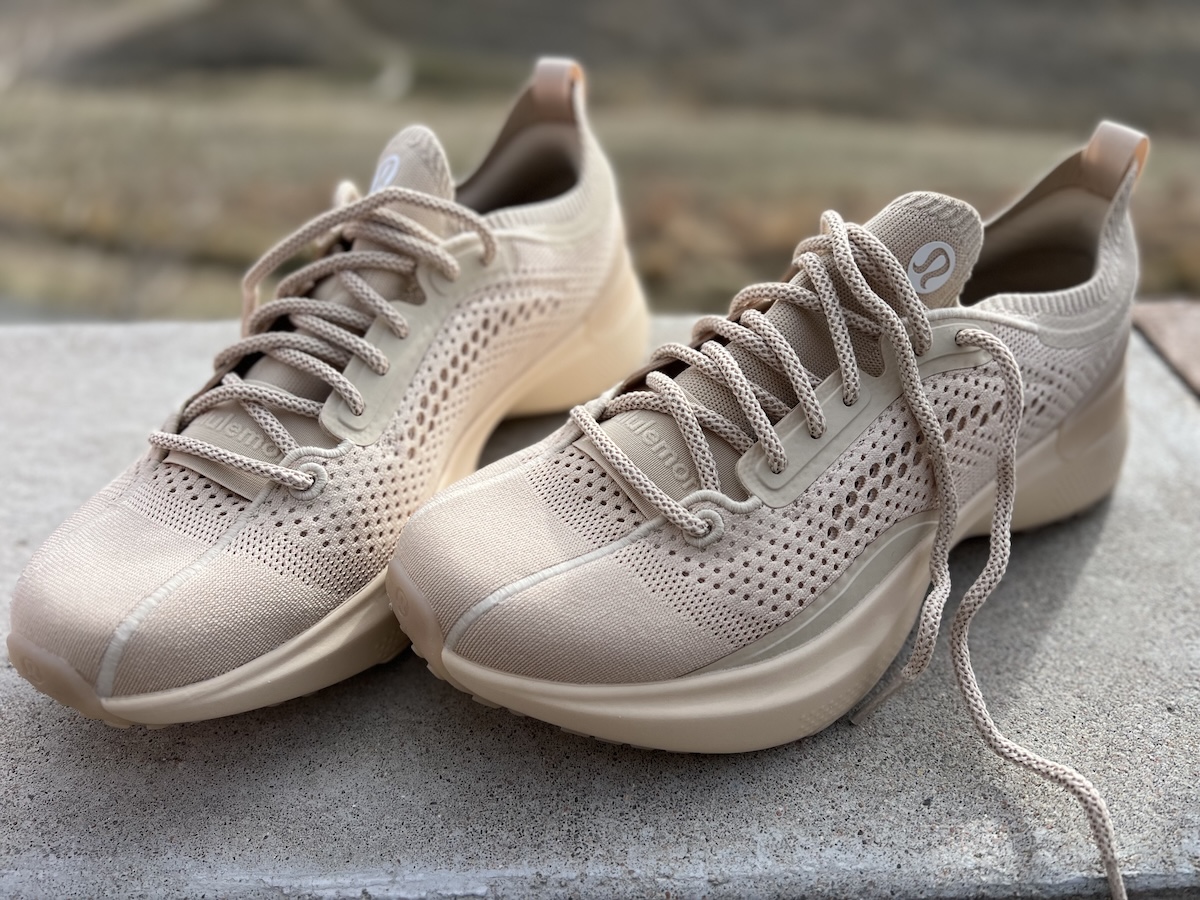
The bootie construction of the shoe means the tongue and laces stay in place, creating a snug and secure feeling. This could be a problem for people who like a back hole for heel lock lacing, though we found it snug enough on its own not to need it.
Overall, these are a great fit for gym classes, weightlifting, and even sprints.
They look great, they feel good, and we definitely put them in the rotation.
- Heel toe drop: 6 mm
- Weight: 8 oz women’s only
- Usage: Gym trainer
- Not available in wide
- Available in four colors
- Available at Lululemon for $148
- Check out our full review of the Lululemon Charfeel 3 here
Best for Stability + Cushion- R.A.D One V2
R.A.D. stands for “Rally Against Destruction,” and they incorporate that into their entire mission. These shoes are designed to be an all-around gym shoe that’s “good at everything, and ready for anything.”
A bold statement, but in the end, one we really can’t argue with.
The R.A.D. One’s offer a flat sole and a durable mesh upper, along with a midsole wrap for rope climbs. The outsole rubber is soft and durable, but with a high-traction, “sticky” tread pattern. This inspires confidence while lifting, no matter the surface, and we love it.
A stiff TPU heel cup adds to the stability, holding your heels in place even during power movements.
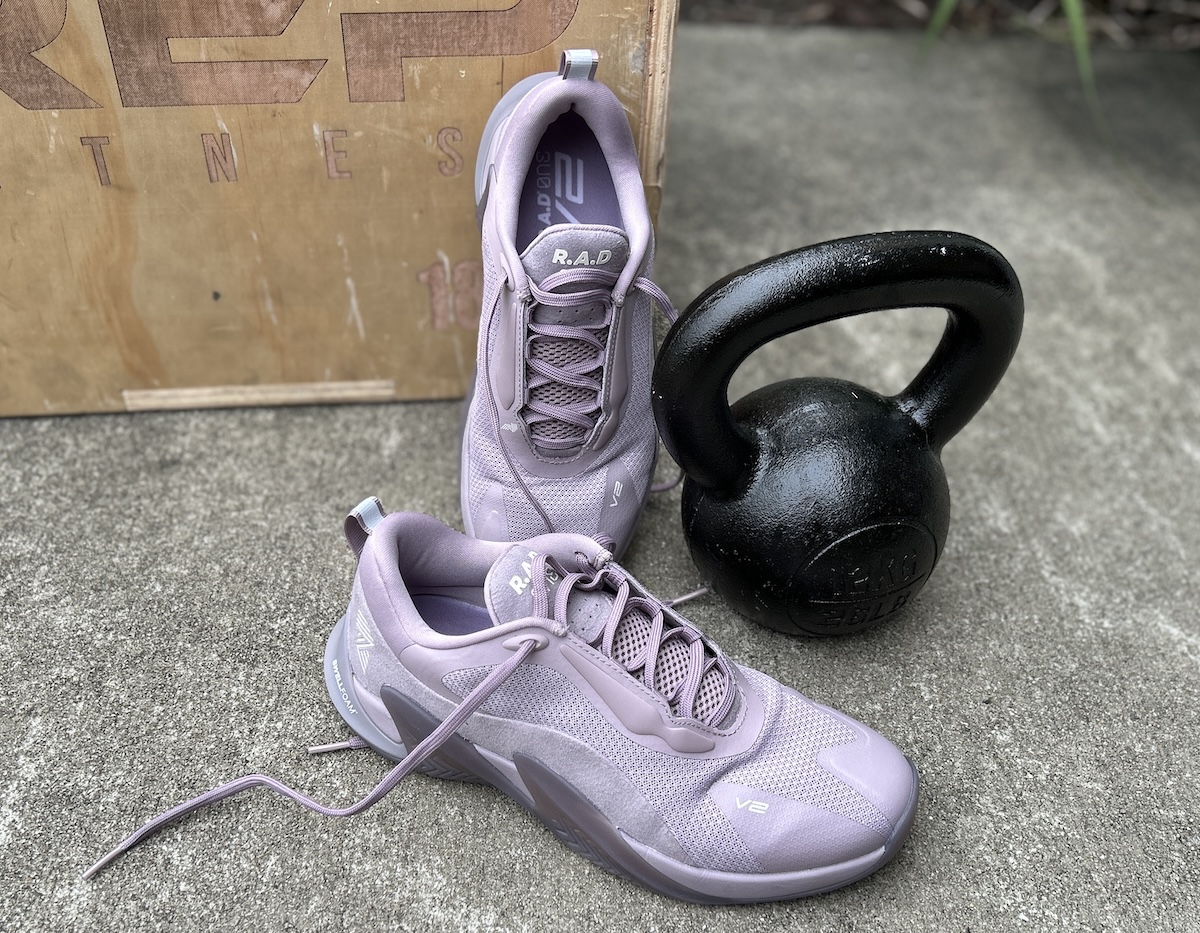
Still, the shoe is flexible enough to transition from lifting to burpees and jumping rope, and they have enough cushioning to make things like short sprints or box jumps comfortable enough, too.
We have their SwellFoam, a springy EVA midsole technology, to thank for that.
The midsole wrap adds a ton of stability to the heel and midfoot, and we just felt really secure no matter what type of movements we were going through in the moment.
The tongue is padded and stays put, the laces are nice and long, and the heel collar has enough padding to offer support without rubbing.
These have a bit of a higher drop, which could make them a good pair to try if you’re coming straight from high-drop running shoes.
R.A.D. also focuses on their environmental impact, and the shoe is partly made from sugarcane to reduce their reliance on fossil-based materials.
- Weight: 12.9 oz Men’s, 13.2 oz Women’s
- Heel Drop: 6 mm
- Available in 13 Colors
- Not available in wide
- Available on rad-global.com for $150
- Check out our full review of the R.A.D. One v2 here
Best Zero-Drop Shoe- Flux Adapt Runner
The Flux Adapt runner are a good choice for anyone looking to transition to a zero-drop daily trainer. The toebox is wide and the 100 nodes in their AdaptSol insole feels like it’s massaging your foot.
These shoes can truly go from the gym to the road, even holding up on runs of 8 or more miles. If you’re experienced with zero-drop or barefoot shoes, these should feel really good out of the box.
If you’re just jumping in, you’re not going to want to take them out for a long run right away; ease into it instead.
It can feel like there’s very little middle ground between plush comfort and a no frills, barefoot style these days. The Flux Adapt runner slides in with more attention to comfort than we usually see with zero-drop models.
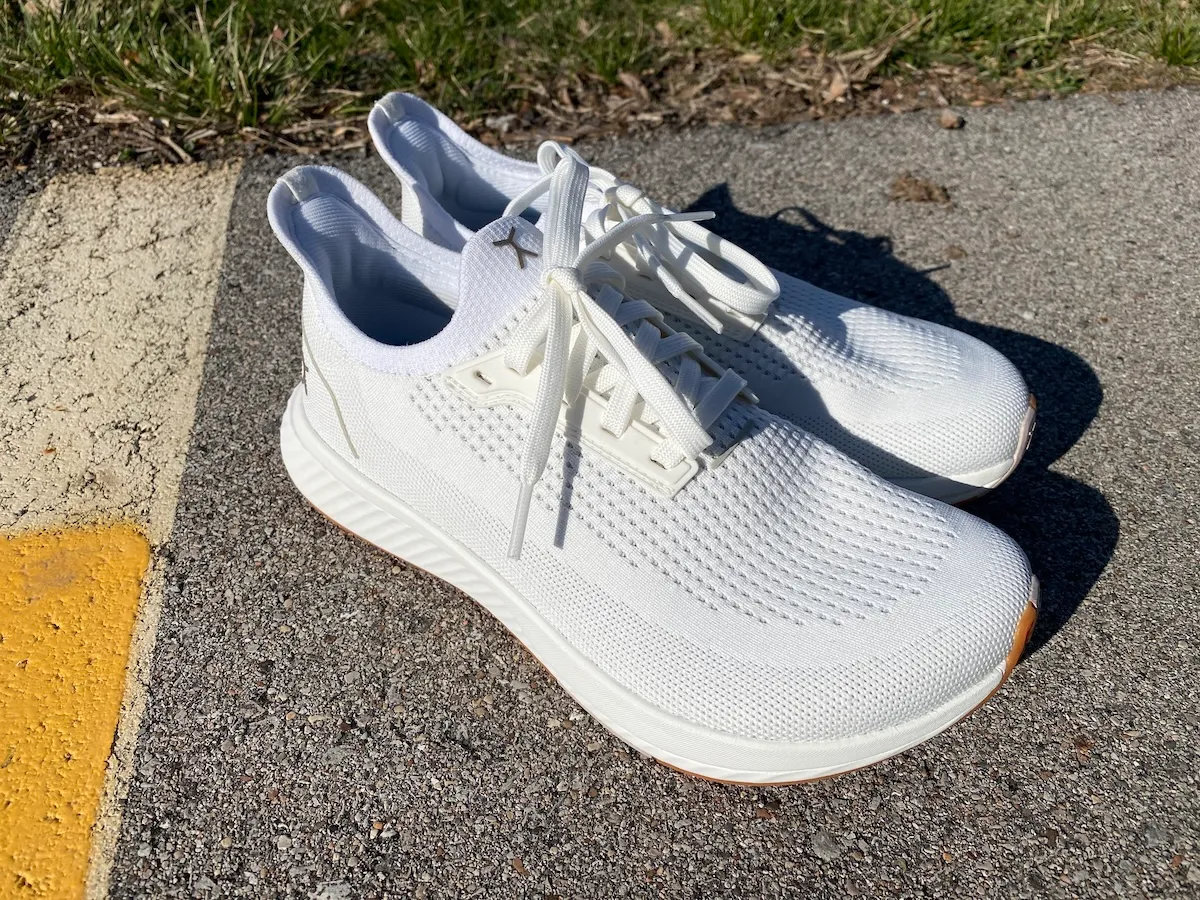
That said, it’s not going to make you faster or help reduce fatigue out on the road. What it does is offer a comfortable, grounded ride for runners looking for little-to-no flair.
And it offers enough stability and ground-feel to take it to the gym, too.
We know we said you shouldn’t run in your gym shoes, but these are super versitile and adaptable for those days when you’re planning to do a little bit of everything.
- Weight: 11.15 oz Men’s (unisex sizing)
- Heel Drop: 0 mm
- 5 Core Colors, 7 Seasonal, and 10 Clearance
- Not available in wide
- Available on Flux Footwear for $140
- Check out our full review of the Flux Adapt Runner here
Best Plantar Fasciitis Shoe- Kuru Flex Via
If you’ve got plantar fasciitis, there are two things you know for sure. First, not being able to properly put weight on your heels can affect your workout in myriad ways, and second, it’s really hard to find a supportive shoe that’s not ugly.
Enter the Kuru Flex Via, which can go a long way to solving both problems while you’re at the gym.
The shoe’s design is minimalist but supportive where it matters. Kuru considers themselves the place to go for plantar fasciitis support, and their structured heel is all about mitigating that pain.
The outsole is flexible and moves with your feet. The insole layered with KURUCLOUD+ foam and KURUSOLE, molds to your feet for maximum arch and shock support.
Stepping into the shoes, you can definitely feel the firm cup of the heel, which holds it in place and helps alleviate plantar fasciitis pain.
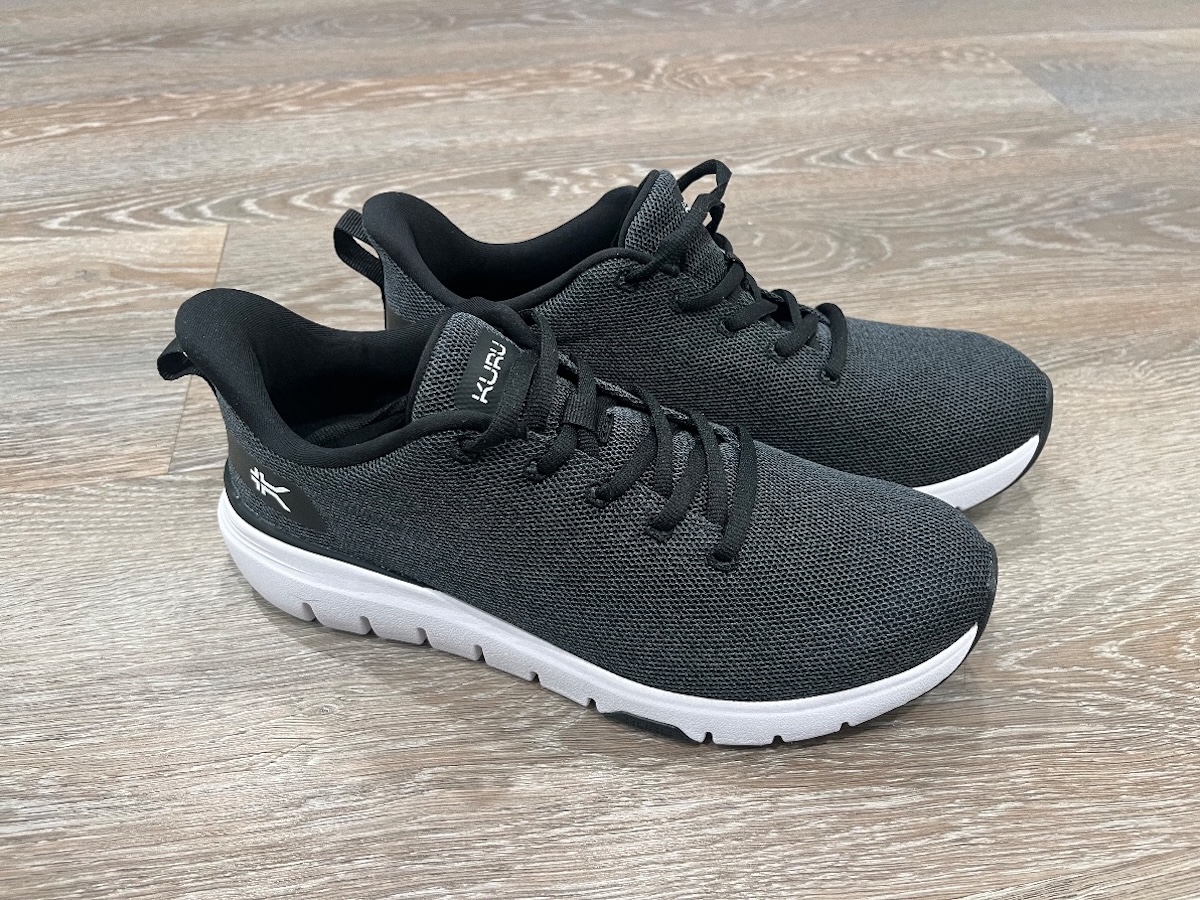
The Kuru Flex Via is supportive but not plush, making it a good choice for lifting weights as well as walking or standing all day. The padding on the tongue and heel collar are just enough to keep your foot supported, but not enough to feel heavy or bulky.
The whole shoe is a study in just enough, and when it comes to gym shoes, that’s exactly what you need.
If you’re someone who deals with plantar fasciitis pain, you know how hard it is to find a shoe that can perform and also keep you comfortable, so these might be something to check out.
- Heel toe drop: 11mm
- Weight: 11.5oz Men’s, 9.6 oz Women’s
- Available in Medium and Width
- Available in six colors for women and four colors for men
- Available at Kuru Footwear for $129
- Check out our full review of the Kuru Flex Via here
Best WideToe Box Shoe- Inov8 F-Fly
The Inov8 F-Fly have many features that make them a good fit for the gym, starting with the minimal 4mm heel-to-toe drop. These will enable you to stay stable even as you add weight, and encourage straight posture as well.
The grippy rubber outsole helps with traction, and you can be sure these sticky rubber bottoms won’t slip. They also feature a ROPE-TEC portion that adds more structure in the midfoot.
The anatomical heel fit and wide toebox might be one of our favorite things about these shoes. The lockdown in the heel reduces unwanted movement, but the wider, more natural toebox lets your toes splay, creating even more stability and balance.

The Inov8F-Fly have moderate cushion and feature POWERFLOW PRO and BOOMERANG in the midsole. An added bit of comfort can go a long way in helping push you through longer or more dynamic workouts.
The upper mesh is breathable and comfortable, and super minimalist. Your foot should be able to move naturally in the shoe, and keep cool while you’re doing it.
These shoes won’t carry you on long runs, but you should be able to move between lifting and cardio without missing a beat.
- Heel toe drop: 4 mm
- Weight: 8.1 oz (mens), 7.4 oz (women’s)
- Available in Precision, Standard, and Wide
- Available in five colors
- Available at inov8.com for $130
There you have it, our list of the best weight lifting shoes. If you give a pair of these shoes a try, make sure to let us know how they work out for you!
What to read next?
- Best Barefoot Shoes For Stronger Feet and Better Balance
- Can Orthotics Actually Fix Runner’s Foot Pain?
- How to Combine Running and Weightlifting: Hybrid Athletes
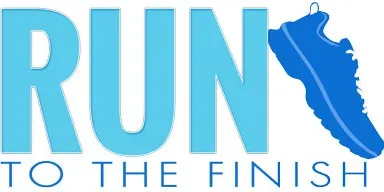


 Altra Paradigm 8 Review | Same Features, Lower Price, Win, Win
Altra Paradigm 8 Review | Same Features, Lower Price, Win, Win
Leave a Reply